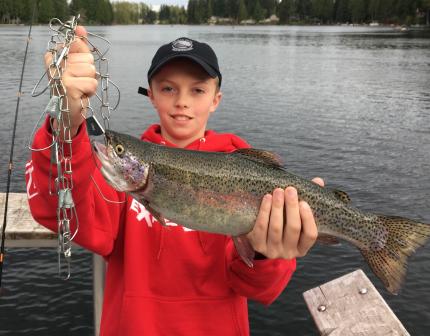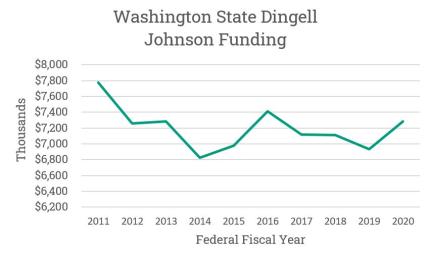70 Years and Dingell and Johnson’s legacy still makes a difference

The Dingell-Johnson Sport Fish Restoration Act, passed by the federal legislature in 1950, provides funding to state fish and wildlife agencies to support recreational fishing. It’s named after Congressman John Dingell of Michigan and Senator Edwin Johnson of Colorado, both of which championed the funding, which was previously funneled to support United States efforts during World War II, in support of the recreational angling community.
In 1984, the Wallop-Breaux amendment modified the act to also capture motorboat fuel excise taxes, which go toward boating access improvements.
Today, the Act continues to fund land acquisition, boating access site development, research, operations, maintenance, and recreational fisheries management to support recreational fishing opportunities and leveraged with state fishing license sales, provides the backbone for recreational fishing management across the nation.
Funding sources
Funding comes from a 10 percent excise tax on sport fishing tackle; a 3-percent excise tax on fish finders and electric trolling motors; import duties on fishing tackle, yachts and pleasure craft; interest on the account; and a portion of powered boat fuel tax revenues and small engine fuel taxes.
The U.S. Fish and Wildlife Service distributes these funds to the states based on a formula of geographical area and the proportion of state fishing licenses sold relative to national license sales. States are required to match 25 percent of the funding with locally generated revenue – such as fishing license sales.
Funding at work in Washington State
Here in Washington, this funding is critical for the Department’s role in supporting recreational fishing opportunities while ensuring we’re meeting our goals for conservation. It supports:
- Fisheries management and research
- Hatchery salmon and trout production
- Comprehensive fisheries sampling and monitoring
- Rehabilitation efforts to restore fish populations and their habitat
- Efforts to inspect, maintain, and repair fish screens throughout the state
- Maintenance of 700 fishing access areas statewide
Funding over the years

In 2020, the state has received $7.2 million in Dingell-Johnson funds. The funds cover a portion of the state’s recreational fishing spending and revenue often fluctuates. National downward trends have recently left the Department with a funding gap. In the 2021 legislative session, the Department is asking the state Legislature to supplement the Department’s budget to help avoid service impacts to state anglers. Below are a few efforts that such funding could help to continue.
For more information about WDFW’s funding sources, visit our Budget and Finance web page.